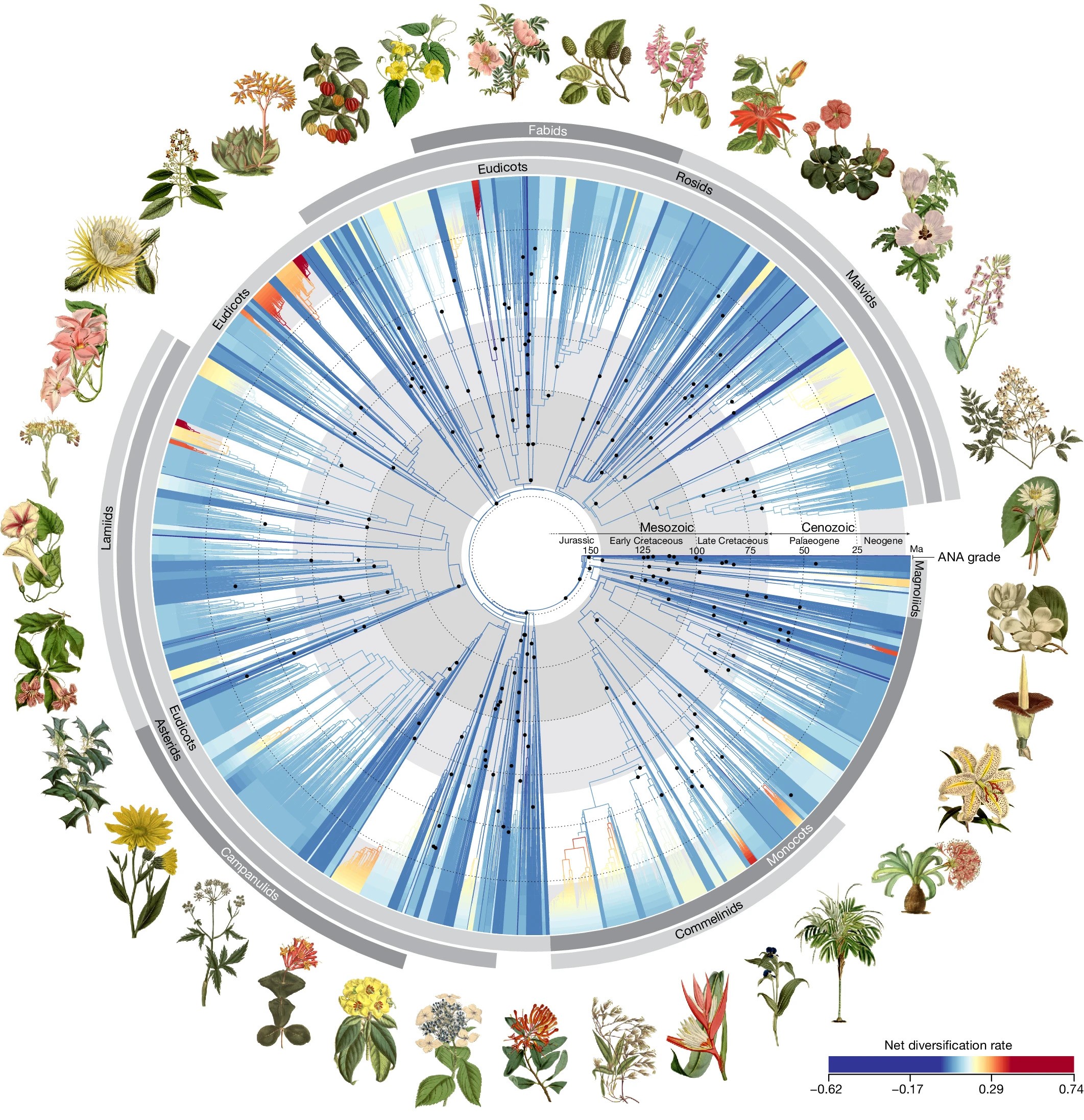How and when flowering plants evolved has been a longstanding question in botany – one that has a huge impact on the field and beyond, also affecting conservation, agriculture, and even medicine. Now, with the creation of the most detailed tree of life so far, we are poised to get some answers.
After a mammoth sequencing effort, which involved an astonishing 1.8 billion letters of genetic code from over 9,500 species, an international team of 279 researchers have shed new light on the evolutionary history of all 330,000 known species of flower.
Previous research has attempted to draw the flowering plant tree of life, but none have gone as far as this, which used 15 times more data than any comparable studies and included DNA from more than 800 plants that had never been sequenced before.
“This is an incredible example of collaboration among the world’s botanists, and the result is new insight into plant evolutionary history,” co-author Pam Soltis said in a statement.

A new phylogenetic tree for flowering plants based on more than 9,500 species.
Image credit: Royal Botanic Gardens, Kew
A tree of life provides a graphic depiction of relationships between species, similar to a genealogical family tree. The creation of an up-to-date tree for flowering plants will hopefully aid us in a multitude of ways: “Understanding how organisms are related is the building block of all biodiversity science and applications,” contributing author Dr Fabián Michelangeli said in a separate statement.
To achieve this for flowering plants – also called angiosperms – the team designed new tools that enabled them to sequence nuclear genes, instead of relying on chloroplast DNA as prior research has. They then applied these techniques to a wealth of living, dried, and extinct plants – including the Guadalupe Island olive, which has not been seen alive since 1875 – to identify the relationships between them.
Studying fossilized flowers also revealed an explosive diversification of angiosperms around 140 million years ago in the Late Jurassic and Early Cretaceous, which gave rise to 80 percent of the major lineages that exist today. This then slowed to a steadier rate of diversification for the next 100 million years until another surge in species numbers around 40 million years ago as global temperatures dropped.
As well as deepening our understanding of Earth’s flora, the findings have real-world applications, from identifying new species and conserving plants in the face of the climate crisis to advising sustainable agriculture and uncovering new medicinal compounds. Talk about flower power.
The study is published in Nature.
Source Link: When Did Flowering Plants Evolve? Huge Study Shakes Up Their Tree Of Life